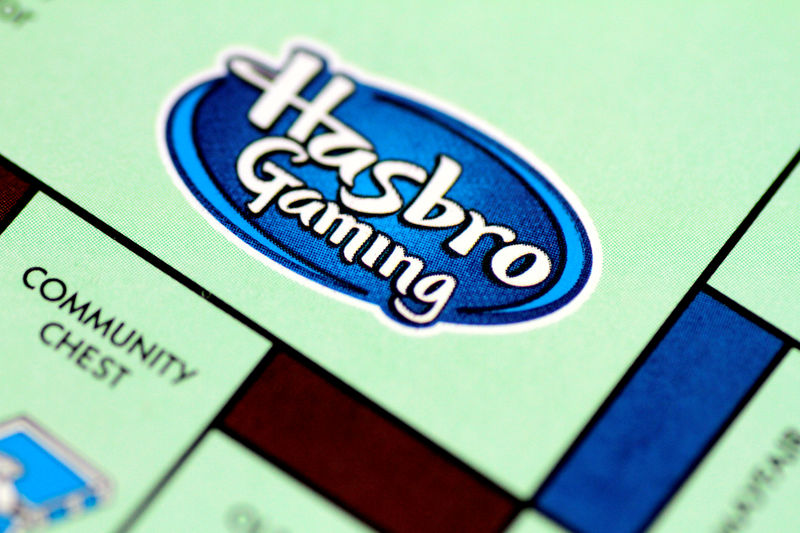Stock Story -
Toy and entertainment company Hasbro (NASDAQ:HAS) missed Wall Street’s revenue expectations in Q3 CY2024, with sales falling 14.8% year on year to $1.28 billion. Its non-GAAP profit of $1.73 per share was 34.1% above analysts’ consensus estimates.
Is now the time to buy Hasbro? Find out by reading the original article on StockStory, it’s free.
Hasbro (HAS) Q3 CY2024 Highlights:
- Revenue: $1.28 billion vs analyst estimates of $1.30 billion (1.3% miss)
- Adjusted EPS: $1.73 vs analyst estimates of $1.29 (34.1% beat)
- EBITDA: $406.4 million vs analyst estimates of $320.5 million (26.8% beat)
- EBITDA guidance for the full year is $1 billion at the midpoint, below analyst estimates of $1.04 billion
- Gross Margin (GAAP): 62.2%, up from 55.4% in the same quarter last year
- Operating Margin: 23.6%, up from -11.3% in the same quarter last year
- EBITDA Margin: 31.7%, up from 26.7% in the same quarter last year
- Free Cash Flow Margin: 13.6%, up from 11.1% in the same quarter last year
- Market Capitalization: $9.80 billion
Company OverviewCredited with the creation of toys such as Mr. Potato Head and the Rubik’s Cube, Hasbro (NASDAQ:HAS) is a global entertainment company offering a diverse range of toys, games, and multimedia experiences for children and families.
Toys and Electronics
The toys and electronics industry presents both opportunities and challenges for investors. Established companies often enjoy strong brand recognition and customer loyalty while smaller players can carve out a niche if they develop a viral, hit new product. The downside, however, is that success can be short-lived because the industry is very competitive: the barriers to entry for developing a new toy are low, which can lead to pricing pressures and reduced profit margins, and the rapid pace of technological advancements necessitates continuous product updates, increasing research and development costs, and shortening product life cycles for electronics companies. Furthermore, these players must navigate various regulatory requirements, especially regarding product safety, which can pose operational challenges and potential legal risks.Sales Growth
Reviewing a company’s long-term performance can reveal insights into its business quality. Any business can have short-term success, but a top-tier one sustains growth for years. Hasbro’s demand was weak over the last five years as its sales fell by 1.6% annually, a rough starting point for our analysis.Long-term growth is the most important, but within consumer discretionary, product cycles are short and revenue can be hit-driven due to rapidly changing trends and consumer preferences. Hasbro’s recent history shows its demand has stayed suppressed as its revenue has declined by 16.4% annually over the last two years.
Hasbro also breaks out the revenue for its three most important segments: Consumer Products, Entertainment, and Wizards & Digital Gaming, which are 67.1%, 1.3%, and 31.5% of revenue. Over the last two years, Hasbro’s Consumer Products (toys, games, apparel) and Entertainment (content) revenues averaged year-on-year declines of 19.1% and 48.1% while its Wizards & Digital Gaming revenue (Wizards of the Coast) averaged 11.7% growth.
This quarter, Hasbro missed Wall Street’s estimates and reported a rather uninspiring 14.8% year-on-year revenue decline, generating $1.28 billion of revenue.
Looking ahead, sell-side analysts expect revenue to decline 2.1% over the next 12 months. Although this projection is better than its two-year trend it's hard to get excited about a company that is struggling with demand.
Cash Is King
Free cash flow isn't a prominently featured metric in company financials and earnings releases, but we think it's telling because it accounts for all operating and capital expenses, making it tough to manipulate. Cash is king.Hasbro has shown decent cash profitability, giving it some flexibility to reinvest or return capital to investors. The company’s free cash flow margin averaged 10.5% over the last two years, slightly better than the broader consumer discretionary sector.
Hasbro’s free cash flow clocked in at $174 million in Q3, equivalent to a 13.6% margin. This result was good as its margin was 2.4 percentage points higher than in the same quarter last year, but we wouldn’t read too much into the short term because investment needs can be seasonal, causing temporary swings. Long-term trends are more important.
